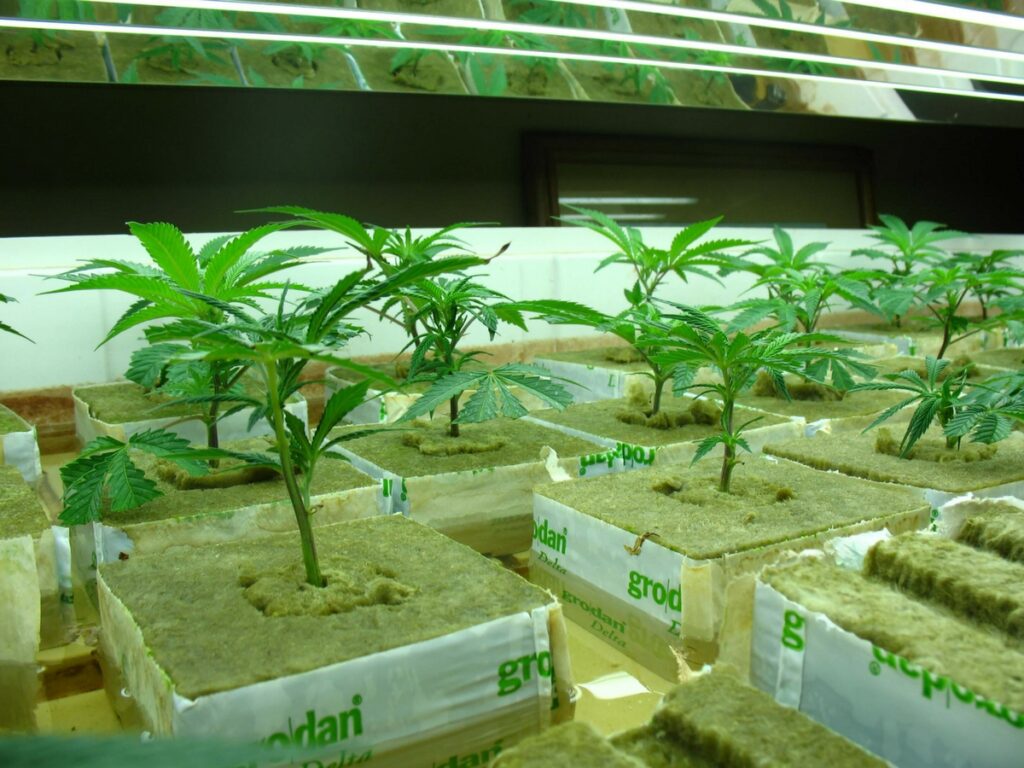
Principles of growth
Plants change CO2 and H2O into glucose under the influence of light. Glucose is the chemical building block for the structure and sturdiness of the plant. From glucose, the plant makes cellulose, the material which gives plants their fibrous structure. (Glucose is, in fact, stored light energy). The chemical process in which carbon dioxide and water are converted into glucose is called photosynthesis (from the Greek ‘photos’ = light, and ‘synthesis’ = to compose). Chlorophyll, which also gives plants their green color, is indispensible for this process. If all the conditions are right, the following chemical reaction occurs:
6CO2 + 12H2O = C6H12O6 (glucose) + 6O2 (oxygen) + 6H2O
We can deduce a number of things from this formula. To get one part glucose, we need six parts CO2 and 12 parts H2O. It would seem that less water is necessary. When we look at the chemical formula, six parts water are also produced next to the 6 parts oxygen, and 1 part glucose. However, research has shown that in the chemical process, 12 parts water are needed. The ‘excess’ water is used in the intermediate steps. The water does not re-appear until the end of the process. CO2 is a gas in the atmosphere. There must always be sufficient carbon dioxide available, otherwise, plant growth will reduce. Everyone knows that plants need water From CO2 and H2O, not only glucose, but also oxygen is made under the influence of light, by the plants with the help of chlorophyll. For plants, Oxygen is a by-product of growth. For people and most animals, it’s the primary condition of life. This is a good combination. In fact, in their metabolism, animals do the converse of what plants do. They convert glucose and oxygen into carbon dioxide and water to be able to move, and to allow the heart and lungs to work, etc. CO2, a gas which is exhaled by people, can again be used by plants for photosynthesis. It can be thought of as a cycle. The glucose made by plants is an energy source for the plant. Some processes, such as the intake of water, require energy. Next to that, glucose forms the building material for all kinds of other processes with which the plant lets all its specific properties show. It would go to far beyond the pupose of this book to look into all those chemical processes. For the reader of this book, it’s about getting good results growing cannabis at home A plant cannot grow without light, air (which contains CO2), water, and various nutrients. The chemical process in which CO2 and H2O are converted into glucose and oxygen under the influence of light is called photosynthesis. When we look at this process a little closer, it actually involves two different chemical reactions. The first is called photolysis. In photolysis, water is broken down into oxygen (O), and hydrogen (H). Both light and chlorophyll are necessary for photolysis. This is called the light response. The second chemical reaction is called the dark response As the term suggests, no light is necessary for the dark response. With dark response, carbon dioxide is converted into glucose, with the help of the hydrogen produced during the light response. The distinction between the light- and dark reaction is of interest to the cannabis home grower in order to gain insight into the manner in which the plants must be illuminated (and sometimes kept in darkness). The plants grow optimally only when a good balance is found between the light and dark reactions.

